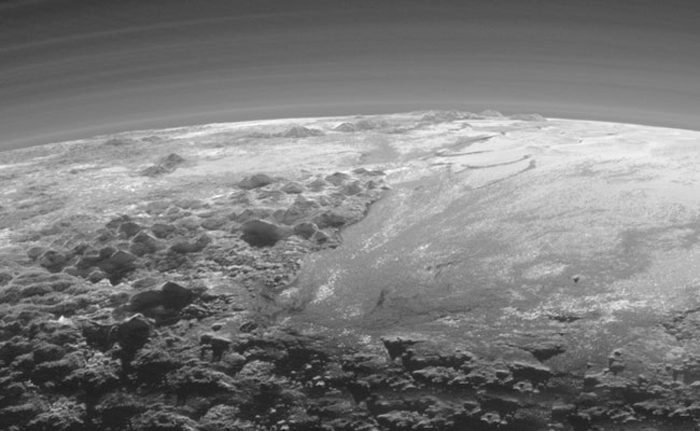"This image really makes you feel you are there at Pluto, surveying the landscape for yourself," said New Horizons principal investigator Alan Stern in a statement.
"But this image is also a scientific bonanza, revealing new details about Pluto`s atmosphere, mountains, glaciers and plains," he added.
Just 15 minutes after its closest approach to Pluto on July 14 this year, New Horizons looked back toward the Sun and captured the near-sunset view which was downlinked to Earth on September 13.
This new view of Pluto`s crescent offers an oblique look across Plutonian landscapes with dramatic backlighting from the Sun.
It spectacularly highlights Pluto`s varied terrains and extended atmosphere.
Owing to its favourable backlighting and high resolution, this image also reveals new details of hazes throughout Pluto`s tenuous but extended nitrogen atmosphere.
The image shows more than a dozen thin haze layers extending from near the ground to at least 100 km above the surface.
In addition, the image reveals at least one bank of fog-like, low-lying haze illuminated by the setting sun against Pluto`s dark side, raked by shadows from nearby mountains.
"In addition to being visually stunning, these low-lying hazes hint at the weather changing from day to day on Pluto, just like it does here on Earth," noted Will Grundy, leader of the New Horizons composition team from Lowell Observatory, Flagstaff, Arizona.
This new image also provides evidence for a remarkably Earth-like "hydrological" cycle on Pluto - but involving soft and exotic ices, including nitrogen, rather than water ice.
"We did not expect to find hints of a nitrogen-based glacial cycle on Pluto operating in the frigid conditions of the outer solar system," added Alan Howard, member of the mission from University of Virginia.
More about:














-1741278702.jpg&h=190&w=280&zc=1&q=100)

































